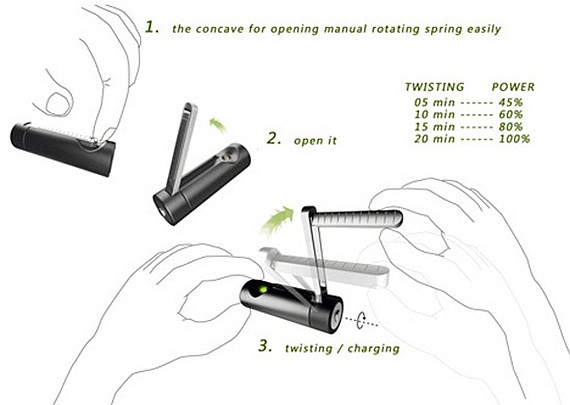Mechanics of Hand-powered Generators
The mechanics of hand-powered generators are not too complicated. They work like other generators, except the initial energy is provided by your arm rather than from steam by burning coal or a flowing river. A generator is basically an electric motor working in reverse. Both are based on principles of magnetism discovered by physicist Michael Faraday.
Faraday discovered in 1831 that passing a conductive wire through a magnetic field produced an electric current in the wire. By spinning a coil of wire around a magnet, he found that he could create a steady current. Thus, he could convert energy used to spin the coil into electrical energy. This principle powers generators that run on gasoline or diesel fuel, as well as the massive turbines in modern power plants, where the coils are turned by falling water or steam generated by burning coal or igniting nuclear reactions.
It’s even possible to scale such a generator down so it fits in a travel gadget you can keep in your pocket. Instead of gasoline, steam, or falling water, the coils are turned by you. When you turn the crank on the side of the generator, the coils move around the magnet and generate current.
Some very simple hand generators don’t have voltage regulators in them, so using them with sensitive equipment can be problematic. For example, if you connected one to a light bulb and turned the crank very fast, you could burn out the filament in the bulb. However, most modern hand-powered generators that are intended for use with a specific gadget do have the ability to regulate voltage so the device will work properly with it.
Using Hand-powered Generators
Using hand-powered generators is pretty simple. Some travel gadgets actually have generators built in. For example, gadgets with built-in hand-powered generators that people commonly use on camping trips include a radio and a light that can be used for signaling if you need help. Both of these devices can run off of regular batteries most of the time, but if you’re stranded with dead batteries, a hand crank on the side lets you power it up enough to tune in a weather report or use the light. You don’t have to worry about connecting the generator to anything because it all works internally.
Other hand generators are made to be used with a specific device, such as a certain brand of cell phone. The generator is a small gadget with a hand crank. A special connector lets you hook it up to the phone. You simply turn the crank to start charging the phone’s batteries. While the voltage generated will vary depending on how quickly you turn the crank, built-in voltage regulators will maintain a steady current. The longer you crank, the more power you generate. A few minutes of cranking is usually enough to make a quick emergency phone call.
For more Detail: How Hand-powered Generators Work

